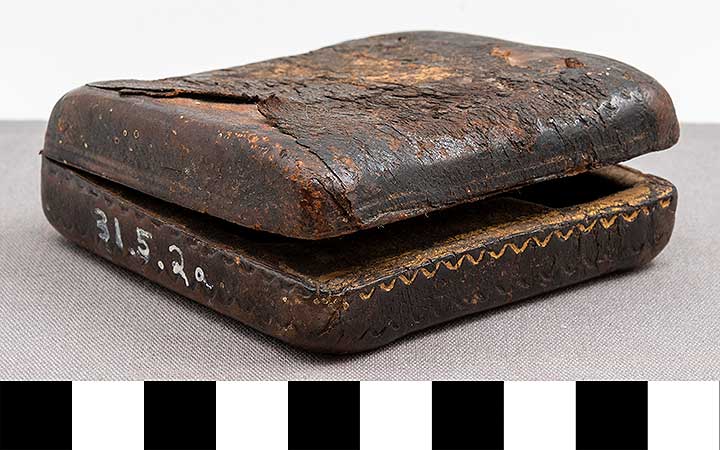Spring Lancet Case
1931.05.0002A
Detailed Images
Basic Information
| Artifact Identification | Spring Lancet Case (1931.05.0002A) |
|---|---|
| Classification/ Nomenclature |
|
| Artist/Maker | Unknown |
| Geographic Location | |
| Period | N/A |
| Date | Late 18th - Early 19th century |
| Culture | German, Austrian |
| Location | Not on Exhibit |
Physical Analysis
| Dimension 1 (Length) | 7.3 cm |
|---|---|
| Dimension 2 (Width) | 7.2 cm |
| Dimension 3 (Depth) | 3.00 cm |
| Weight | 40 g |
| Measuring Remarks | N/A |
| Materials | Animal--Skin--without Fur/Feathers/Scales, Plant--Wood |
| Manufacturing Processes | Tanning, Sewing |
Research Remarks
| Description | This leather lined wooden box, likely crafted in Austria, was designed to house two 19th-century spring lancets, a medical instrument used during the practice of bloodletting. In an era when many illnesses were believed to be caused by an imbalance of blood, or plethora, the practice of bloodletting was considered a cure all, where physicians carefully drained a precise amount of blood in an attempt to restore health and balance. The case’s design reflects both its practical function to carry spring lancets along with a broader social function. In the 19th century, surgical instruments communicated medical expertise, along with the prestige and social standing of physicians. |
|---|---|
| Published Description | N/A |
| Bibliography | Broman, Thomas. “Rethinking Professionalization: Theory, Practice, and Professional Ideology in Eighteenth-Century German Medicine.” The Journal of Modern History 67, no. 4 (1995): 835–72. http://www.jstor.org/stable/2124757. |
Artifact History
| Credit Line/Dedication | Purchase |
|---|---|
| Reproduction | no |
Contact
All information about our collection is constantly reviewed and updated. Please contact Dery Martínez-Bonilla, Registrar, if there is any information you are looking for that isn't currently online.
